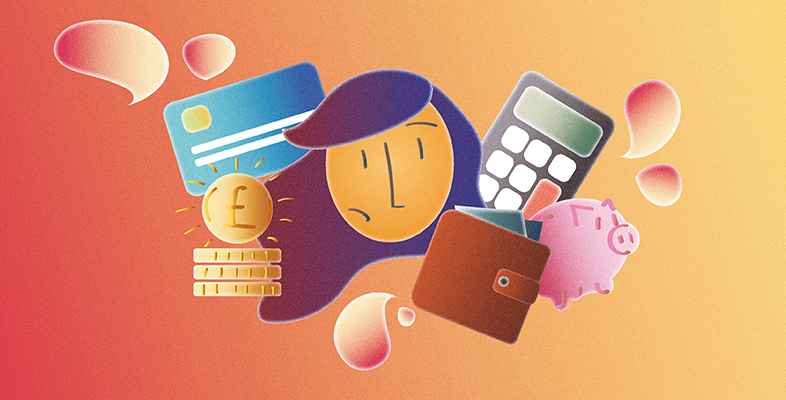2 The social influences on spending
When you buy products – particularly when you’re buying something expensive – several different sources of pressure may apply to the decisions you make.
Clearly there are economic pressures. Do you have enough money to buy the item you want? What is the item worth? Do you need to borrow money or can you pay for the whole item upfront?
But there are social pressures too. Our choices of products and brands can be affected by these, particularly when the products are seen and used publicly – for example cars, smartphones and clothing.
Listen to Audio 1 and learn about these social pressures which may consciously or subconsciously affect what we buy. Then try the activity below.
Transcript: Audio 1 The modern way to shop
Our spending decisions are often influenced by less conscious considerations than simply the price of something or how much money we have to spend. Social influences can shape our spending too. Let’s look at these pressures on our spending behaviour
The first way to understand this is to look at the concept of social status.
The sociologist Max Weber said that a person’s social status is based on the level of authority or prestige that they hold in the eyes of others. So, status may be based on a person’s job or income level – but it is also on the features of their consumption (the goods and services they buy).
As Zygmunt Bauman puts it, in a consumer society ‘one needs to be a consumer first before one can think of becoming anything particular’. The things we consume define our identity and, as Bauman points out, as trends and fashions change, the identity we adopt and the consumption patterns that signal that identity, change too. This can, of course, put pressure on people’s finances as they try to keep up with those trends.
In a consumer society the goods that people buy may have useful properties but can also act as status symbols. Buying a sought-after mobile phone or car not only enables us to stay connected and on-the-move but it also acts as what is known as symbolic consumption.
Symbolic consumption suggests that people are concerned about what others think of them and that the opinions we hold about other people are at least partly based on what they consume and own. Symbolic consumption provides a powerful motivation for spending.
These ideas can be understood further by looking at the observations of two other writers.
First Thorstein Veblen, writing nearly a century ago, talked about how spending is a way of displaying a person’s wealth. Some luxurious things are bought so that others can see how well-off the buyer is. And in a society where wealth confers a high status, buying symbols of wealth – like, say, a Ferrari or even ‘designer label’ clothing – gives you that high status. Veblen termed this type of spending as ‘conspicuous consumption.’
A different view on the aims of symbolic consumption came later in the 20th century from Bourdieu. Here consumption is a way of distinguishing people by social class.
Social class is the informal ranking of people based on their income, occupation, education and other factors, like family background. For Bourdieu consumption and our tastes are influenced most crucially by social class. According to Bourdieu, whilst individuals have some freedom in the way they spend money, their social class directs and restricts the way they carry out those decisions by influencing their actual tastes.
Bourdieu’s ideas can be extended beyond social class to understand how spending can be used to signal belonging to a social group – be that punk, goth, hipster, environmentalist or intellectual or ‘social influencer’.
This concept of symbolic consumption has been developed further in recent years by two more writers.
Silvia Bellezza observes that being busy (and by implication successful) at work is a form of status symbol – particularly in the United States. Here the thing being conspicuously consumed is time. This is starkly different from the idea of earlier writers who saw a life of leisure as the ultimate conspicuous display of the wealth that facilitates such a lifestyle.
Elizabeth Currid-Halkett, by contrast, focuses on the shift in the pattern of consumption towards things that reflect cultural standing rather than ownership of material things. Here spending is on such things as education, organic food, practising yoga – things that she classifies as ‘inconspicuous consumption’. This line of argument is supported by Giana Eckhardt who claims that wealthy people are now distinguishing themselves through more subtle and less obvious branding – such as smaller logos on clothing.
Whichever of these writers you agree with, one thing is sure – when you spend your money you are, in part at least, reflecting your social background, influences and aspirations.
And do reflect too on whether you see yourself and your spending behaviour in these socially-based drivers of consumption.
Activity 2 Why we buy what we buy
Identify the main social influences on what we buy according to:
- Veblen
- Bourdieu
Answer
Veblen refers to the concept of conspicuous consumption where products are bought as a manifestation of prosperity or to seek recognition and approval from others.
Bourdieu’s approach is that what people buy is influenced by the social class they believe they belong to or aspire to belong to. So, the purchases made are symbolic of this class and are intended to be distinguishable from the tastes and preferences of other social classes.
Do you recognise these influences within your own social group?
